Zero Net Energy: A Hardworking-House Term to Know
If you have not yet heard the term “zero net energy,” or ZNE, you will soon be hearing it everywhere. Most simply it means that a building consumes only as much energy as it can produce by renewable methods. Since buildings consume about 25 percent of our nation’s energy, the savings and implications of ZNE are enormous. For several years the U.S. Department of Energy has supported innovation in this area by sponsoring the Solar Decathlon. The biannual competition invites contestants to design and build a house that runs primarily on solar power and produces as much electricity as it consumes.
California building codes have already mandated implementation of ZNE by phasing in complete compliance by 2020 for all new homes, and remodels and additions that significantly upgrade a house, constructed in the state. Since California has at least 10 percent of the nation’s population and the ninth largest economy on the planet, its influence in this area is quickly scaling and spreading across North America. However, California codes prioritize renewable energy production last on the list of requirements that can assist with a home’s compliance. Energy consumption reductions and improved building design performance standards and technology are being phased in first.
Here are a few things that can be and already are being addressed by innovation to achieve this goal.
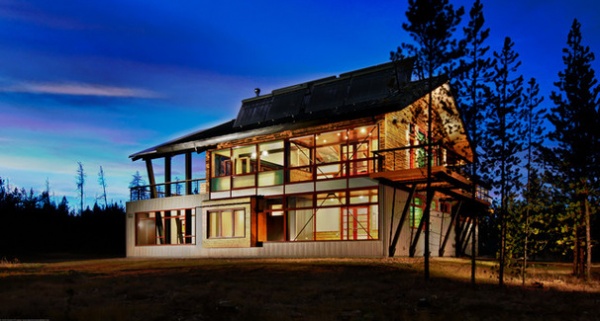
Financing the investments. When ZNE applications show a return on investment in a relatively short amount of time, financial entities are keenly interested in supporting them. California has built incentives into its programs to promote them. Yet the savings on energy consumption alone has propelled lending institutions to support them, as they clearly see the payoff. The trend is spreading. The Colorado residence seen here, by Caddis Architecture, was designed to be ZNE. While its progressive and innovative design embraces a contemporary aesthetic in conjunction with achieving ZNE, vernacular home design, as illustrated in the Florida home below, can be adapted to meet this goal just as easily.
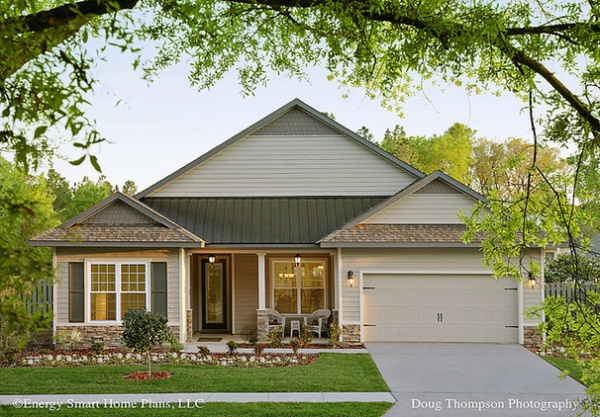
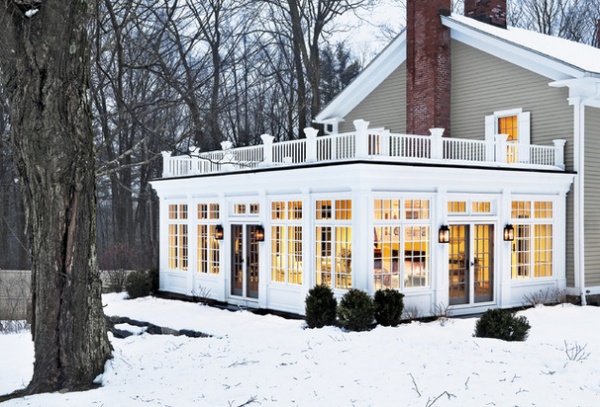
Reducing consumption. Probably the most obvious energy-saving consideration is doors and windows. In the past the glass-enclosed sunroom seen here, by Crisp Architects, would have been impractical during New York’s winter months. Dual- and triple-paned glass, along with other techniques and advances in window design, allows configurations to reduce energy use. In the Seattle house below, awnings with automated systems that sense rain and shading requirements provide a more passive solution to energy consumption at doors and windows.
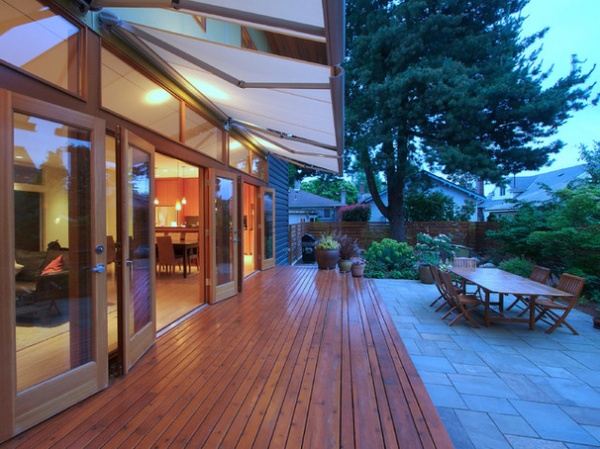
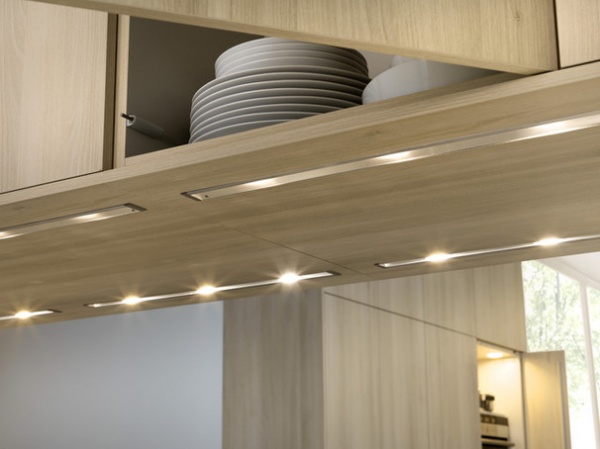
Regulating consumption. The incandescent bulb is gradually being phased out. First, compact fluorescent lamps took their place, which cut energy usage significantly. Lately, LEDs, or light-emitting diodes, have been cutting energy consumption even more. These compact and long-lasting fixtures not only greatly save energy, but they also allow innovative and dramatic lighting effects to be achieved.
The flush and elegant undercabinet fixtures seen here have been mounted snugly, keeping the crisp, clean lines in this modern kitchen. Dramatic lighting effects define the contemporary bath design below. In addition, LEDs can be designed to change color, adding another dimension.
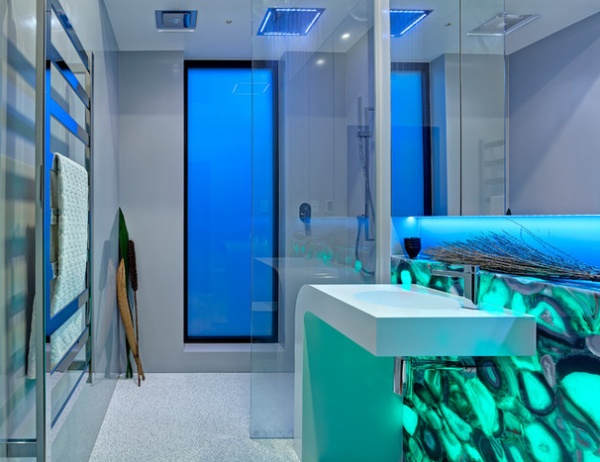
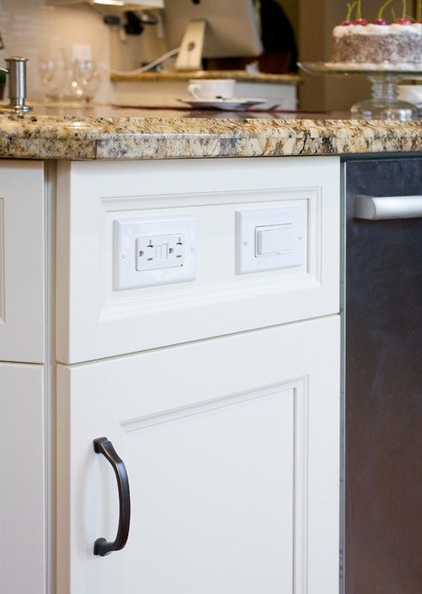
Managing consumption. If you think all of your home electronics and mobile devices that need electricity are contributing to a larger electric bill, you are correct. Utility companies estimate that about one-third of an average home’s juice is consumed by such equipment.
Most appliances and electronics with power cords plugged in draw some electricity even when their power button is off. One of California’s goals is to require switches on all electrical outlets so that electronics that normally stay plugged in can more easily and conveniently be switched off.
Even if you just can’t live without the soft yellow glow of the incandescent bulb in your favorite lamp, you can save energy by installing a dimmer switch on that light fixture or on a hardwired light switch that controls it. Dimmers can save half or more of the energy of a bulb’s full capacity.
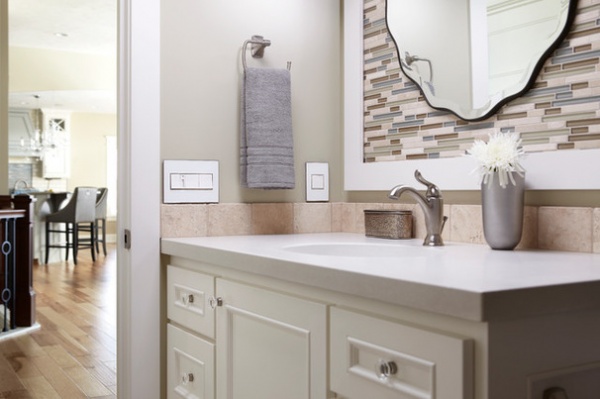
Another California requirement is that lights in certain rooms, such as baths and garages, be connected to motion sensors. This helps, for example, to keep the kids in check when they go around the house turning on the light in each room they enter without turning if off when they leave. In addition, depending on the type of room, incandescent fixtures are not allowed to be installed. The state requires that any hardwired fixture be “high efficacy.” This can be types with compact fluorescent bulbs or LEDs.
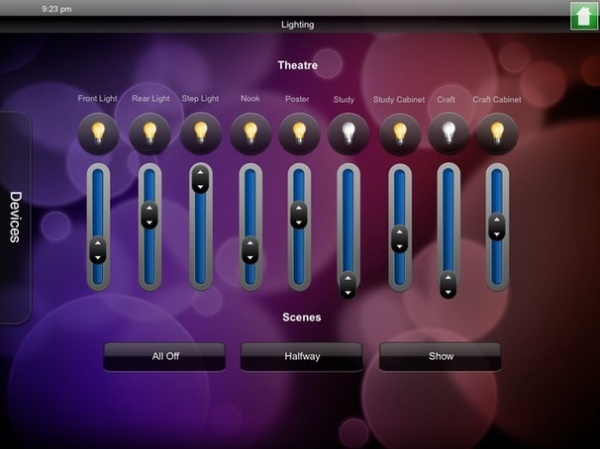
TV ControlsUsually on the higher end, there are systems with control panels, like this one, or ones that can be coordinated with a smartphone application. The ability to manage systems throughout the home will allow consumers not only to monitor their own habits, but to coordinate with peak energy demands in their regions. Utility suppliers place a premium on consumption during the hottest days of the year, for example, when demand surges. Being able to use less air conditioning on those days and planning to spend time out of the house can be a strategic method to lower your bills and help the system meet demand where it is needed most.
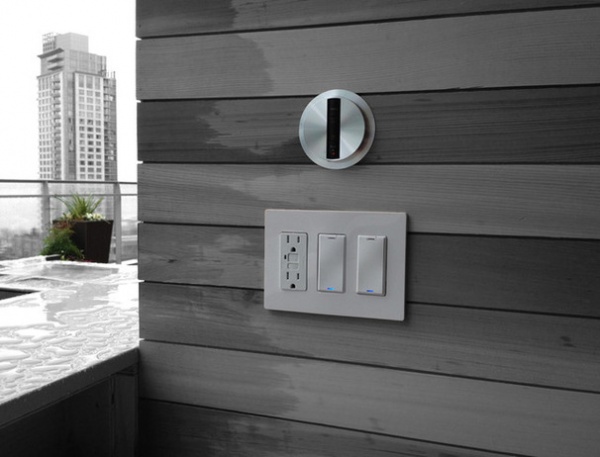
In addition, lighting that can respond to daylight, building designs that allow in sufficient daylight to minimize or eliminate the need for artificial lighting, and windows and ventilation that can be automated to respond to desired interior conditions are other features that can help to reduce and manage energy consumption.
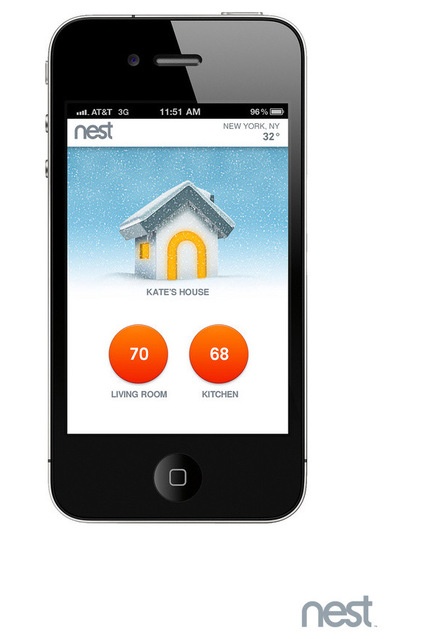
Nest Learning ThermostatEmploying technology. A good example of such technologies is the Nest thermostat, which works with smartphones to assist in the management of a home’s climate. A good example of how Nest can save you energy is to consider a time when you are out of town for business. Let’s say you are in Los Angeles for three days, and a heat wave has enveloped Dallas, where you live. You set the temperature in your house to 82 degrees Fahrenheit while you are away, which keeps your electricity consumption down. When you board the plane in L.A. to return to Dallas, you open the app and set the temperature in your house to 72 degrees. By the time you get home, the temperature in your house will be just right.
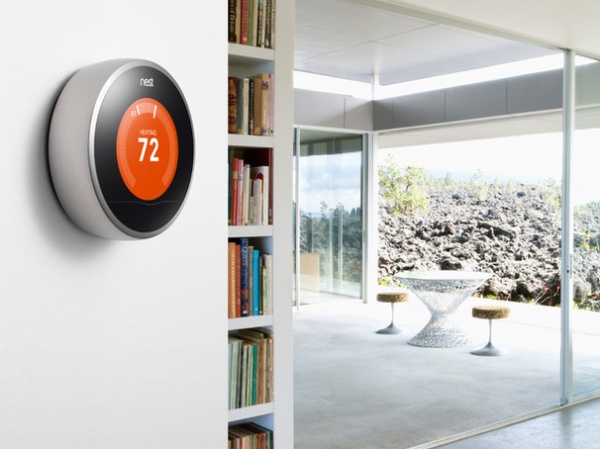
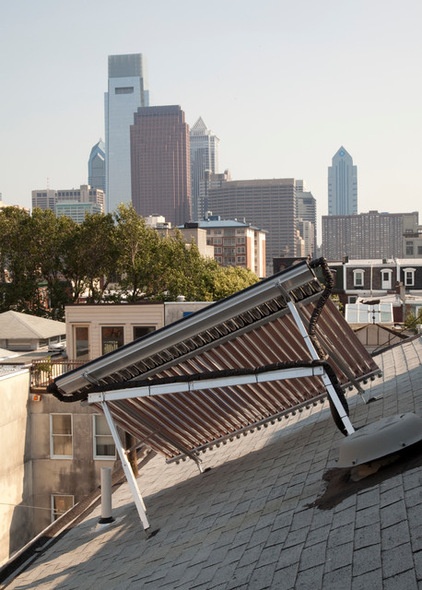
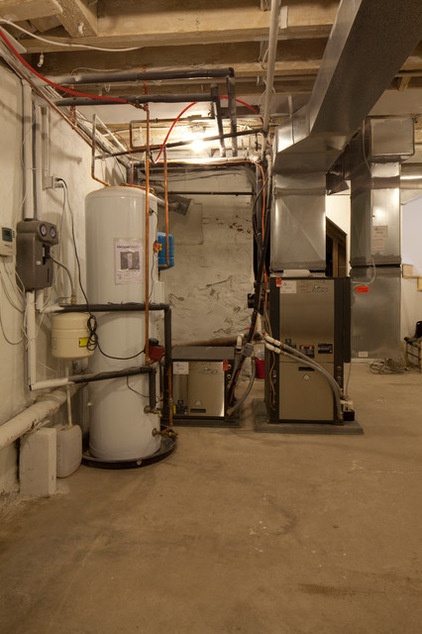
One of the best advantages of California’s implementation of energy codes is that the price of photovoltaic technology is falling dramatically. While California will always have abundant sunshine, it is likely that future household mechanical systems will use several technologies in unison to achieve a home’s energy demands and climate control. The urban Philadelphia residence seen here employs geothermal, solar electric and solar thermal systems to provide comfort. The Montana home below uses geothermal and solar systems for a large and sprawling design.
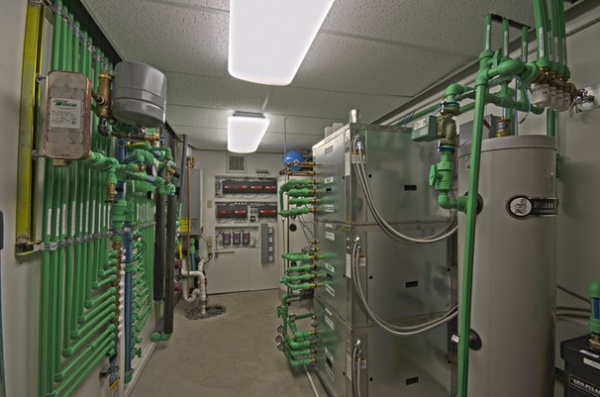
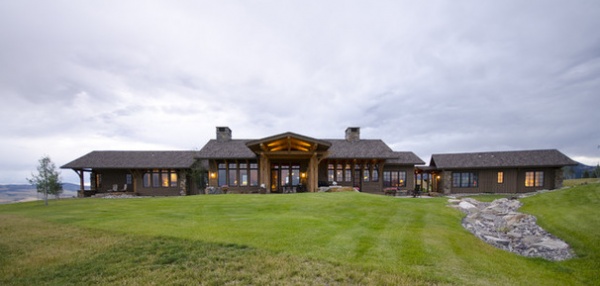
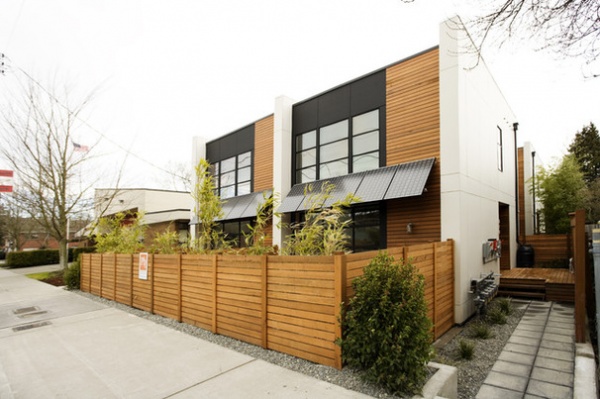
Solar panels double as shade devices and overhang protection for the doors of this Seattle house. Traditional architecture, as seen below, can include solar panels just as easily. Look for a future in which any house can be retrofitted with a myriad of technologies, as the solutions likely will be fluid and flexible.
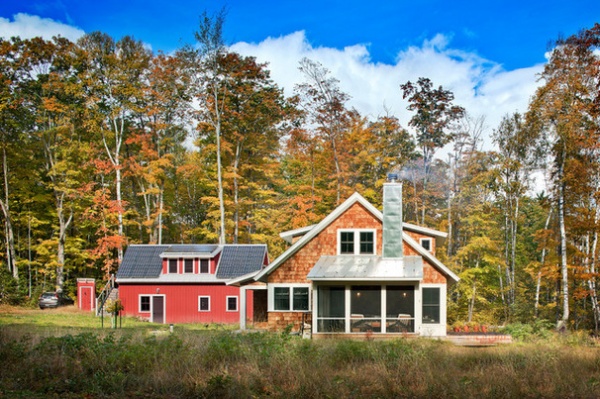
Energy storage. Probably the biggest challenge at this time is energy storage. It is currently difficult to achieve on an individual scale. Our public energy grids are still primarily dependent on power generated by fossil fuels, which can be readily adjusted based on demand. There are already problems with utilities wishing to maintain control of the energy grids and how they will handle the influx of individually generated supplies. Flexibility, on both the individual and public levels, will probably solve all of the challenges. Zero-net-energy homes may sound complex, but imagining zero dollars for electric bills, for at least a couple of months a year, seems simple enough.
More:
Upgrade Your Windows for Beauty, Comfort and Big Energy Savings
Easy Green: 10 Ways Toward a Zero-Energy Home












